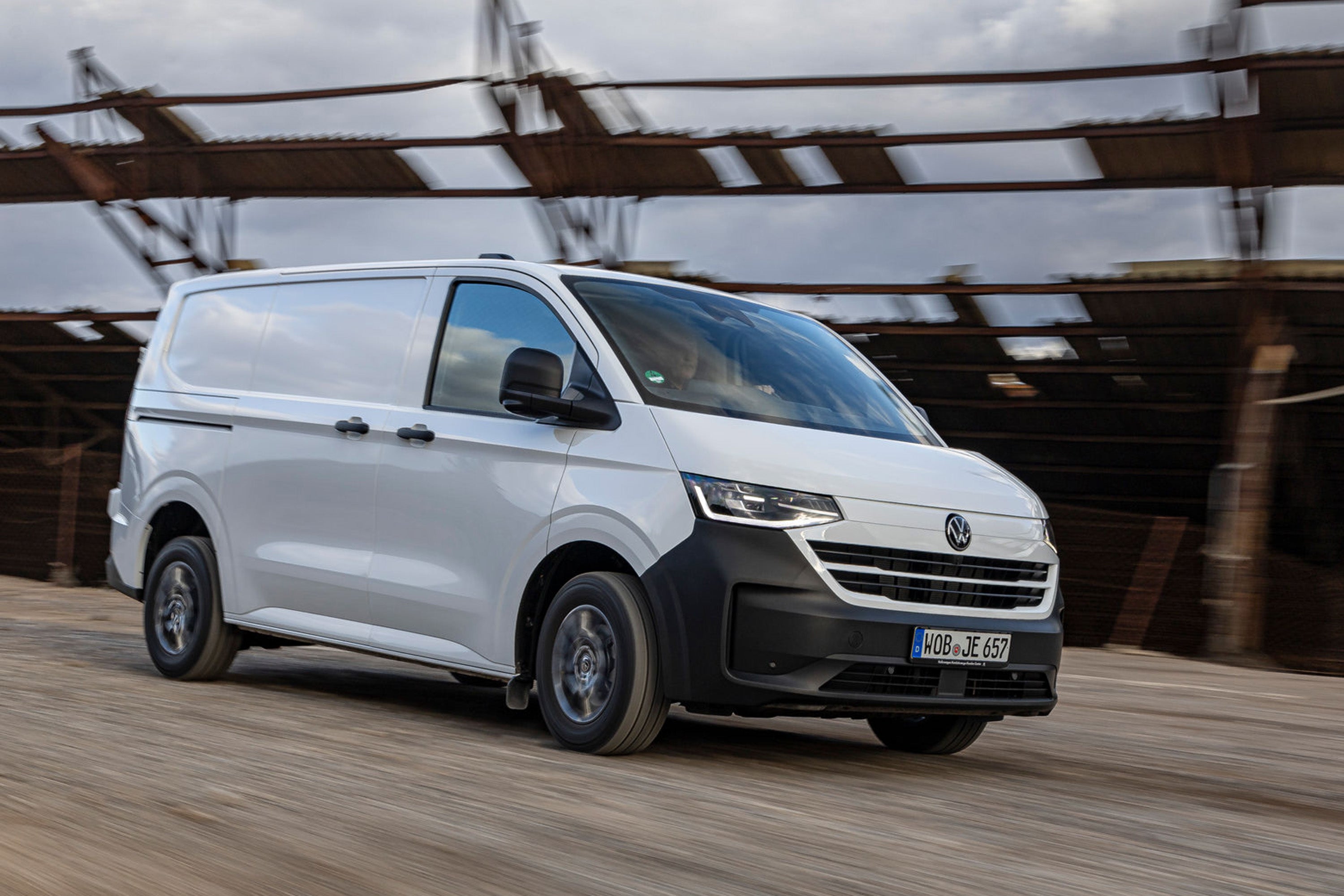Volkswagen T7 Transporter Review 2025: Price, specs & load capacity
Quick overview
Pros
- Great dynamics and ride
- Well-designed load bay
- Fun to drive
Cons
- Less model choice than Ford Transit
- Lacks unique identity
- Fiddly climate controls
Overall verdict on the Volkswagen T7 Transporter
“The latest Volkswagen Transporter is one of the best medium panel vans on the market right now, combining car-like driving manners with good practicality."
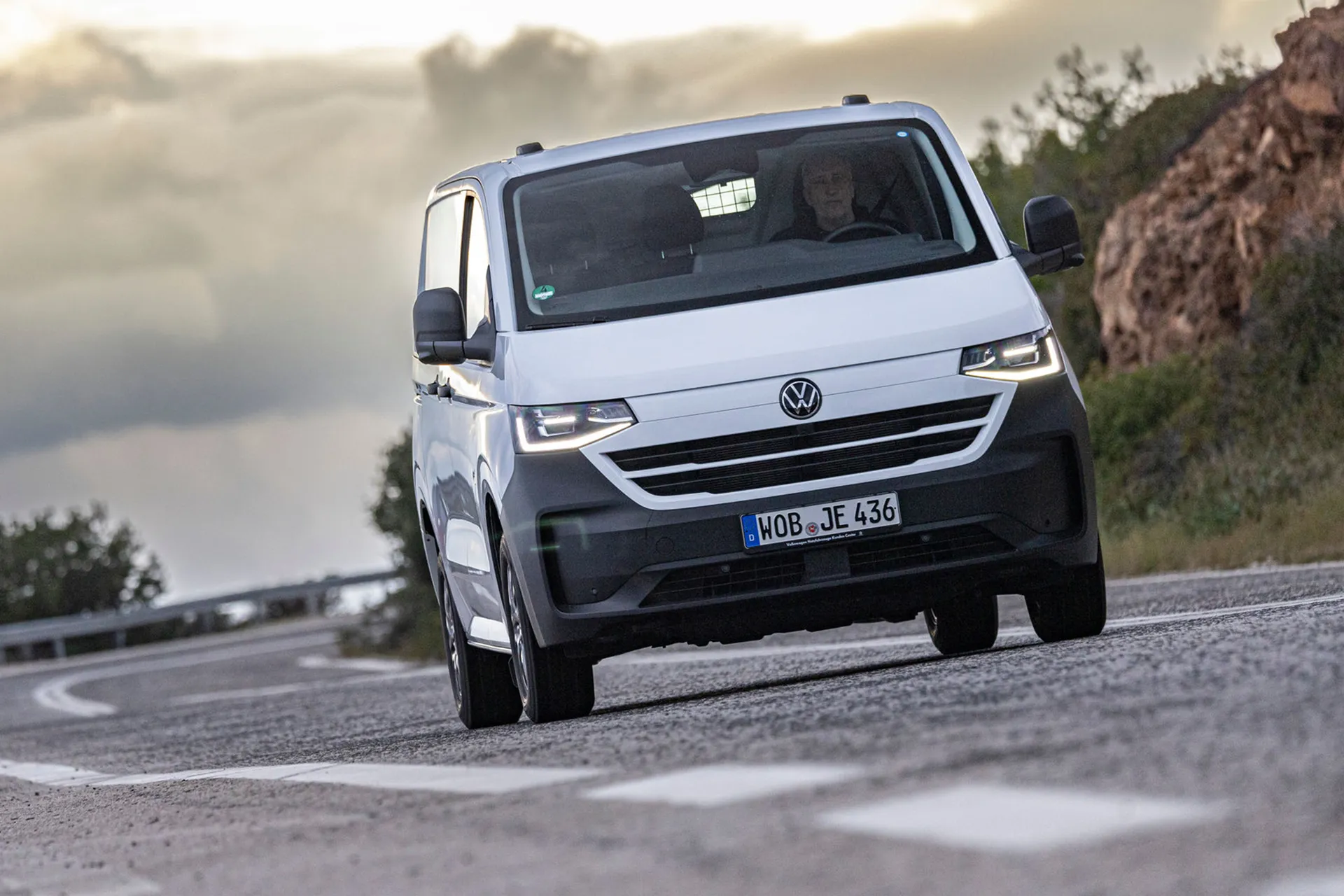
When Volkswagen revealed the seventh generation of the Volkswagen Transporter at the IAA Commercial Vehicle Show in Hannover in 2024, it met with some controversy.
As the first medium van to emerge from the German brand’s collaboration with Ford, Volkswagen traditionalists were wary – after all, Volkswagen has always been a standalone competitor in the van market, with a reputation for quality and a unique brand identity.
In today’s new vehicle market, though, things aren’t quite so simple, and with the need to develop new electric, plug-in hybrid and internal combustion architectures, the only way forward is economies of scale. It’s not the first time Ford and VW have collaborated, either – in the 1990s, the Ford Galaxy and VW Sharan launched a joint assault on the MPV market, and not without success. The latest Volkswagen Transporter shares most of its architecture with the Ford Transit Custom – Britain’s best-selling van.
It's an achievement that’s as much on merit as it is on Ford’s ability to woo fleets – the Ford Transit Custom is arguably the very best van in its class, so does the latest Volkswagen Transporter have what it takes to match that? There seems to be no reason why not – although there is a little less choice than you get with Ford.
At launch, the Transporter will be offered in four formats – Panel Van, Kombi, Shuttle and Dropside. The panel van comes in two body lengths, as does the Kombi, which is essentially a double cab. The Shuttle is an eight- or nine-seater luxury minibus designed for professional transport businesses, while the Dropside is a double cab with a pick-up body unique to Volkswagen.
The dimensions are greater all round than the T6, other than the height, which shrinks to 1.98m to allow it to squeeze under car park barriers and into most domestic garages – a useful security boost for businesses. A high roof model, measuring 2.50m in height, is offered as an option.
It's longer than the previous model at 5.05m, with a 3.1m wheelbase, or 3.50m in long wheelbase format, while it is also neatly 13cm wider. As well as improvements to load space, this also has a positive impact on passenger space.
Styling-wise, Volkswagen has tried to differentiate the Transporter from the Transit by giving it a distinctive, rounded nose – a nod, it says, to the iconic VW Type 2 vans of old. It works better from some angles than others, but it certainly gives the Transporter a distinctive face that differentiates it from the Ford Transit Custom.
From the windscreen backwards, though, it’s noticeably the same shape as the Ford Transit Custom – unsurprising, as the models were co-developed. Even the rear lamp lenses are the same on electric models, although – oddly – not on diesels, where the VW has a different light signature.
There are three choices of diesel engine and two electric models at launch, with a plug-in hybrid scheduled to join the range later on, which will use the same 2.5-litre petrol engine and motor as the Ford Transit PHEV.
The 2.0-litre TDI diesel units have power outputs of 110PS, 150PS and 170PS, the two lower power outputs have a six-speed manual transmission, and the 170PS diesel has a Ford-developed eight-speed automatic transmission as standard. Each of the diesel variants is front-wheel drive.
The electric models use a 65kWh battery pack and have a power output of either 165PS or 218PS and are rear-wheel drive. They’re surprisingly quick off the mark, with 430Nm of torque and offer up to 270 miles of range (WLTP).
The payload for diesel models ranges from 851kg to 1,242kg, while the electric payload ranges from 767kg to 1,088kg. There’s a maximum braked trailer weight of up to 2,800kg (depending on model) for both diesel and electric versions.
Inside, the cabin now has a completely flat floor and a revised dash moulding that gives the middle seat passenger better legroom than in previous Transporters. Much of the layout will be familiar to anyone who has driven a Ford Transit Custom – notably the big door bins and dual glove boxes, but VW’s digital cockpit is bespoke and smartly laid-out, while the 13-inch touchscreen is clear and easy to operate.
Despite the concerns of hardcore VW fans, the new Transporter remains an appealing van – it’s well-proportioned, neatly packaged and great to drive – a very strong contender in the mid-sized van market.
Is the Volkswagen Transporter right for you?
The Volkswagen Transporter is a well-engineered, smart and extremely functional medium-sized van that’s ideal for those who want to promote a strong image for their business. It drives well, is decent enough value for money and is extremely functional – a great all-rounder.
What’s the best Volkswagen Transporter engine/model to choose?
This will depend on your usage. The electric model is great to drive and is exceptionally refined, making it our favourite overall. However, until a hybrid powertrain arrives, it’s the 150PS diesel that’s arguably the best all-round performer.
What other vans are similar to the Volkswagen Transporter?
The Ford Transit Custom is, unsurprisingly, the most similar van to the Volkswagen Transporter. Others to consider are the Vauxhall Vivaro, Citroen Dispatch, Peugeot Expert, Mercedes-Benz Vito and Renault Trafic.
Comfort and design: Volkswagen Transporter interior
"The Volkswagen Transporter’s digital cockpit is smart and functional and the touchscreen easy to operate, but some of the door trim plastics feel cheap".
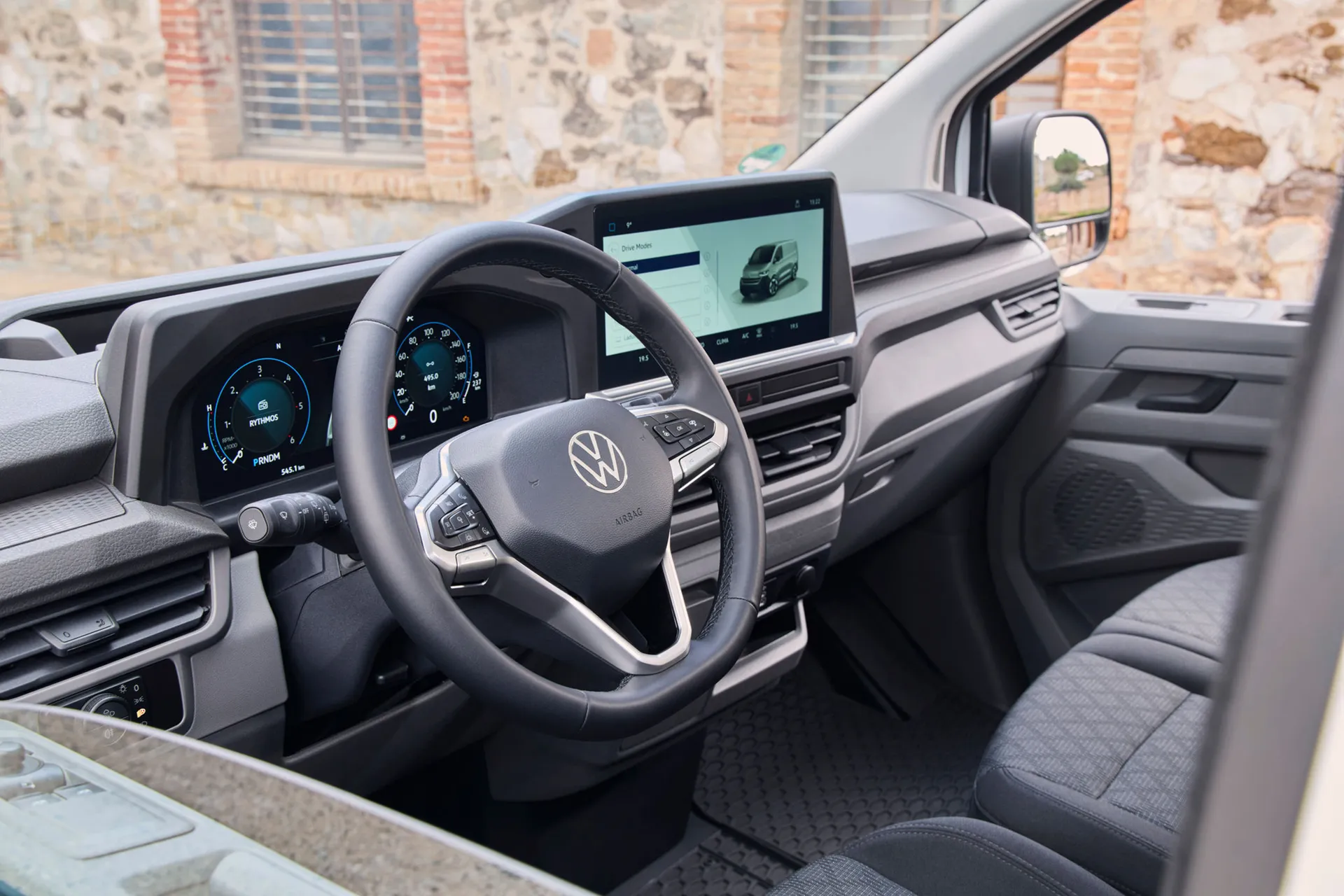
In terms of its cabin layout, the Volkswagen Transporter is well thought-out, neatly styled and spacious, especially when it comes to passenger space and legroom. The flat floor also allows a walk-through option for the driver, minimising the risk of alighting into busy traffic.
Overall quality feels good, with smart trim and dashboard plastics, though there are a couple of areas of plastic door trim that feel a bit flimsy and don’t inspire us with confidence for their long-term longevity.
There are plenty of storage and cubby area options, and functional, chunky controls. The climate control settings can be fiddly when operated via the touch screen, but everything else is straightforward and intuitive.
A choice of USB-C, USB-A and 12v power sockets is welcome, as is an optional 230v three-pin plug socket to power items such as laptops and low-voltage power tools. Furthermore, the driver assistance systems can be controlled - and the lane-keeping function switched off quickly – via steering wheel buttons.
Quality and finish
With each previous generation of Volkswagen Transporter, the German firm has applied the premium feel of its passenger cars to its vans, and that led to some initial concerns about the Transporter being co-developed with Ford. Overall, though, the Transporter still feels like a high-quality product, with chunky, sturdy-feeling controls and quality fabrics. The only area where it falls down is with some cheap-feeling interior door trim, the plastic on the cubby section below the door pull feeling particularly flimsy.
Infotainment: Touchscreen, USB, nav and stereo in the Volkswagen Transporter
On each trim level, the Transporter gets a smart 13-inch touchscreen that’s both intuitive and easy to operate. It connects via both Bluetooth and USB to both Apple CarPlay and Android Auto and has a wireless app connection and DAB. There are three USB ports – two Cs and one A, and the useful option of a 230v mains inverter power supply.
Space and practicality: Volkswagen Transporter cargo space
At the business end, the sliding side door (or two, should you choose a second as an option) is wide enough to swallow a Euro pallet, while the rear barn-style doors can be fixed at 90 or 180 degrees to ease access for loading. Opt for the long wheelbase version and it’ll swallow three Euro pallets without fuss.
Load capacity is greater than on the Volkswagen Transporter T6 in all versions – in standard wheelbase form with a low roof, the total volume is 5.8 cubic metres, expanding to 9.0 cubic metres with a high roof and long wheelbase.
The maximum width between the wheel housings has increased by 148 mm to 1,392 mm and the length of the load compartment in short wheelbase versions is 2,602mm, increasing to 3,002mm in the LWB. There’s also a load-through bulkhead option, which can increase the short wheelbase model’s load length capacity to 3.0m down one side.
Diesel versions are capable of shifting payloads from 851kg to 1,242kg depending on the model, while the electric payload ranges from 767kg to 1,088kg, with a maximum braked trailer weight of up to 2,800kg (depending on the model) for both diesel and electric versions.
Handling and ride quality: What is the Volkswagen Transporter like to drive?
"Not only does the Transporter have sharp handling, but it also has the ride quality of a well-damped passenger car”.

The Ford Transit Custom which shares the same platform as the VW is one of the best medium-sized vans there is to drive, with sharp steering and pleasingly dynamic, car-like handling. It’s no surprise, then, that the Volkswagen Transporter follows suit.
The dynamic behaviour is excellent for a van, with reassuring handling and sharp steering, while body roll is well-controlled and the ride quality as good as a well-damped saloon car – it’s one of the best vans on the market from a driver’s perspective be it laden or unladen, as with a load on board it’s assisted by a damper system that adapts to the van's payload and load distribution. It feels stable and secure, even at high speeds or on broken road surfaces.
Even in its least powerful form, the 110PS diesel, the strong mid-range torque means it pulls well through the gears, while the 150PS model - expected to be the best-seller in the UK for the first few years of production, at least - is a brilliant van, with a smooth transmission and eager performance proving a good match for the chassis. The 170PS eight-speed automatic is a bit sharp pulling away from a standstill, but is a composed cruiser.
Electric models are excellent – extremely nippy away from the mark, while, if anything, the rear-wheel-drive chassis is more predictable and composed than the front-wheel-drive diesels. Again, the ride quality is superb.
Refinement at speed is excellent, while it’s also impressively nimble around town, and all-round visibility is great. The mirrors are bigger and better than before, with usefully larger secondary blind-spot mirrors that give a much-improved view of the areas where you may encounter an errant cyclist or vulnerable pedestrian, for example.
All come with rear parking sensors and those with rear-view cameras have a far better field of vision and sense of perspective than you’ll find on the Stellantis medium van range.
What engines and gearboxes/batteries and motors are available in the Volkswagen Transporter?
There are three choices of diesel engine and two electric models at launch, with a plug-in hybrid scheduled to join the range later on, which will use the same 2.5-litre petrol engine and motor as the Ford Transit PHEV.
The 2.0-litre TDI diesel units have power outputs of 110PS, 150PS and 170PS, the two lower power outputs have a six-speed manual transmission, and the 170PS diesel has a Ford-developed eight-speed automatic transmission as standard. Each of the diesel variants is front-wheel drive. The electric models use a 65kWh battery pack and have a power output of either 165PS or 218PS and are rear-wheel drive. They’re surprisingly quick off the mark, with 430Nm of torque.
Volkswagen Transporter range: How far can you travel on a charge?
Based on the WLTP cycle, the BEV models offer up to 270 miles of range (WLTP). When it’s time to plug in, the charging port is located at the front, so it doesn’t get in the way of access to the load area. Peak DC rapid charging capacity is 125kW, which means a 10-80 per cent top-up of the 64kWh battery should take just under 40 minutes. A full charge from a 7.4kW home wall box charger will be around eight and a half hours.
Refinement and noise levels
The Volkswagen Transporter is refined and civilised when cruising, easy to manoeuvre around town and surprisingly entertaining when the roads get a bit more interesting.
The BEV model isn’t the quietest electric van we’ve driven, though – the motor is nowhere near as noisy as you’ll find on a Maxus e Deliver 3, for example, but it’s certainly more noticeable than it is on Stellantis vans, such as the Vauxhall Vivaro Electric and Peugeot e-Expert when driving around town. Once underway, though, it’s far quieter.
Safety equipment: How safe is the Volkswagen Transporter?
There’s a pretty comprehensive suite of driver assistance systems with the Volkswagen Transporter, with even the entry level model featuring lane departure warning, brake assist, automatic emergency braking and road sign recognition. The Commerce Pro adds a rear-view camera, adaptive cruise control and traffic jam assist.
When assessed by Euro NCAP, the Transporter was awarded the top Platinum ranking, just as (unsurprisingly) the Ford Transit Connect managed.
MPG and fuel costs: What does a Volkswagen Transporter cost to run?
"There’s nothing exceptional about the Volkswagen Transporter’s fuel economy, but nothing disastrous either - it’s about average for its class."
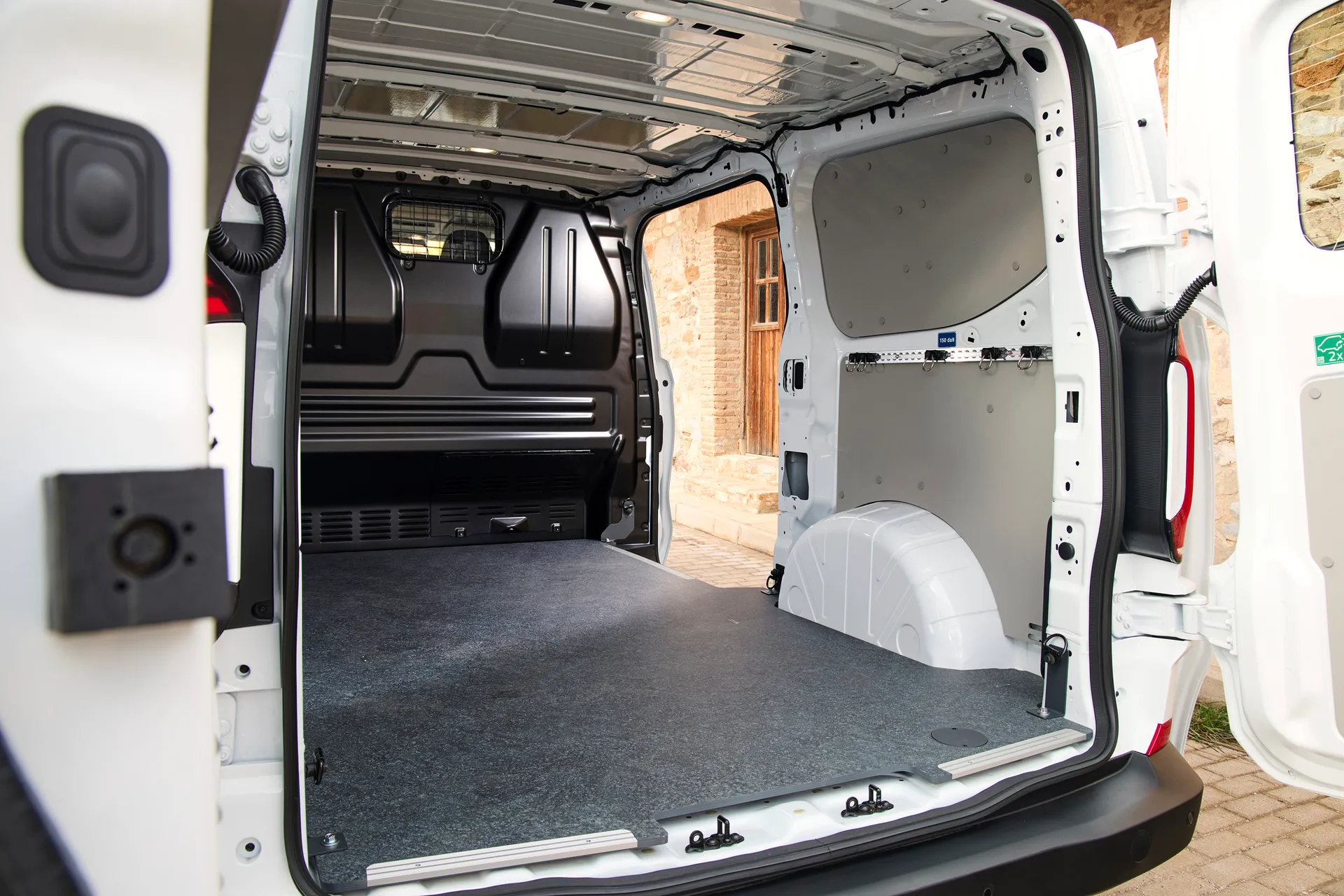
Fuel economy is reasonably good for all diesel variants - the 110PS delivers around 40mpg, and the 150PS and 170PS models at little less. Meanwhile, he electric models use a 65kWh battery pack and have a power output of either 165PS or 218PS Both offer up to 270 miles of range.
A plug-in hybrid model is set to follow in 2026 with a headline economy figure of 91.6mpg (WLTP), though this will be closer to 40mpg or so in real-world use. It has an electric range of up to 35 miles.
Volkswagen Transporter reliability and warranty
We're better off assessing Ford as a brand than Volkswagen in terms of reliability, given the T7 Transporter's Transit Custom roots. On that front, Ford hasn't placed well in recent HonestJohn.co.uk Satisfaction Index surveys, though most of those entries were for cars, not vans. In any case, Ford has been making dependable vans for decades, and this should hopefully mean that both the Transit Custom and the Transporter prove reliable.
Volkswagen offers a better warranty than Ford - up to five years and 124,000 miles if the van is serviced within the main dealer network.
Volkswagen Transporter insurance groups and costs
At the time of writing, these hadn't been confirmed. Judging by both the previous generation Transit Custom and and the T6 Transporter, they will likely start as low as 5 for basic versions of the van. Expect the electric and plug-in hybrid derivatives to be a lot higher.
VED car tax: What is the annual road tax on a Volkswagen Transporter?
Commercial vehicles pay a flat rate of £320 a year. You won't escape this by getting an electric van, with the Vehicle Excise Duty exemption for electric vehicles coming to an end in April 2025.
Volkswagen Transporter price
"The Transporter range starts at just over £38,000, which is similar to how much you pay for the Ford Transit Custom."
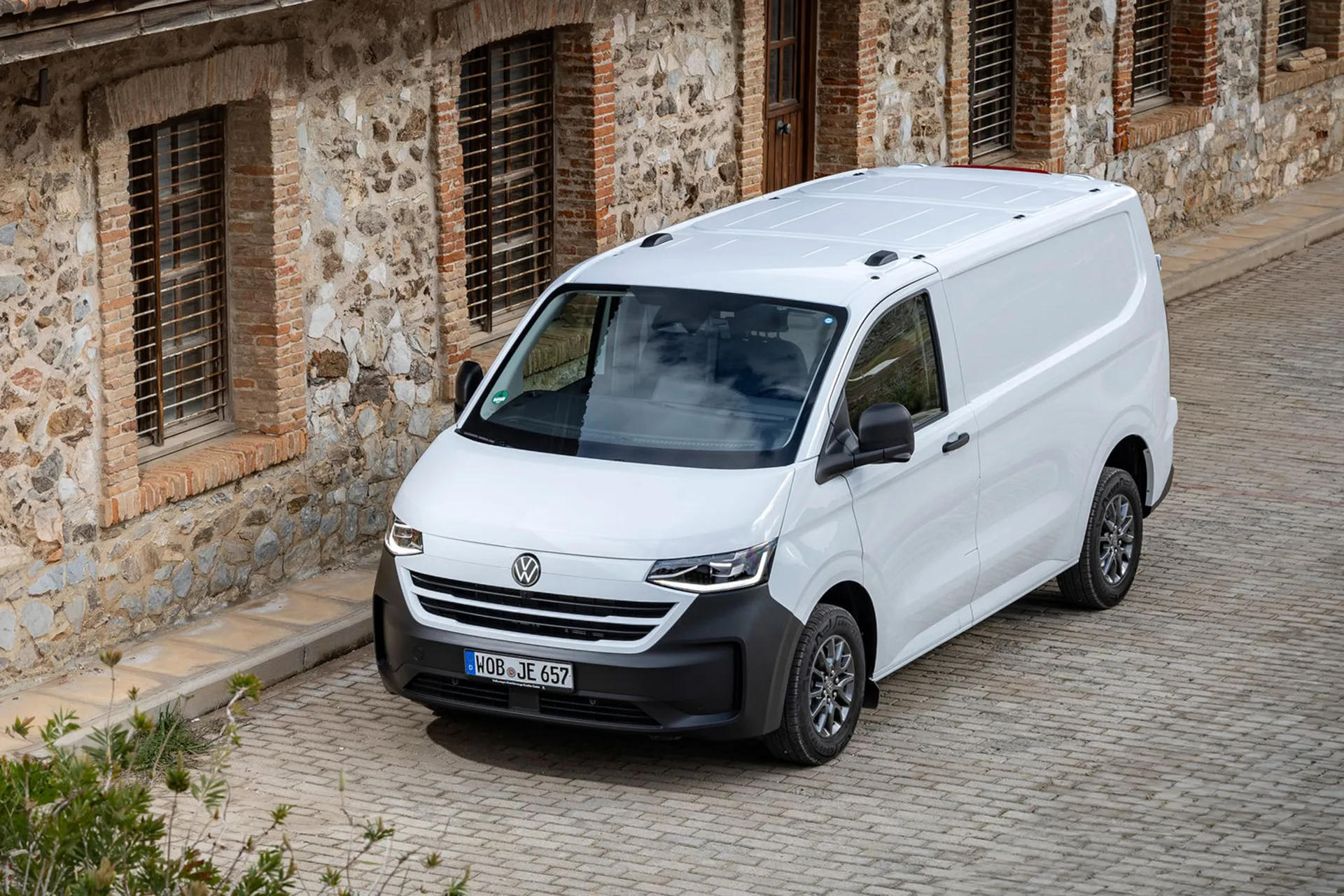
The entry model is the SWB Commerce 110 TDI, which comes in at £38,520 including VAT. LWB models command at £1,020 premium, while it’s a £1,440 walk-up to the Commerce Plus. The Commerce Pro tops the range but is notably pricier at £4,080 over the entry-level models.
Trim levels and standard equipment
Three trim levels are offered - Commerce, Commerce Plus and Commerce Pro, with even the entry-level model getting a full suite of driver assistance systems, keyless start, reverse parking sensors and electric, heated mirrors.
Commerce Plus models add body-coloured bumpers and mirror housings and a rear-view camera, while the Commerce Pro gets alloy wheels, automatic air conditioning, wireless smartphone charging and a heated windscreen. Electric models also get heated seats and an auxiliary heat pump.
Ask the heycar experts: common questions
Is the Volkswagen T7 Transporter made by Ford engine?
How much does the Volkswagen T7 Transporter cost?
How many seats does the Volkswagen Transporter have?
Get our latest advice, news and offers
Keep me updated by email with the latest advice, news and offers from heycar.
By submitting you agree to our privacy policy
